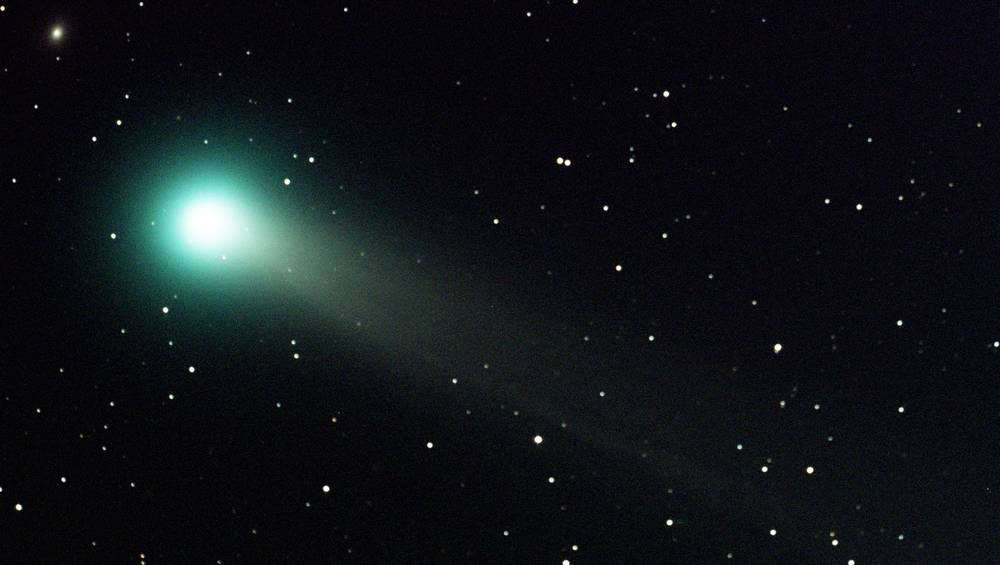
As a lifelong space enthusiast who has spent countless nights gazing at the cosmos, I must say that the current Taurid meteor showers have become my new favorite celestial spectacle. Unlike the fast-paced and fleeting Perseids or the vibrant Orionids, the Taurids offer a more leisurely, yet grandeur-filled experience.
Occasionally, the universe delivers us a hard double blow, much like the 2009 two-part miniseries Meteor (currently streaming on Peacock) depicts. In this fictional tale, Christopher Lloyd, Jason Alexander, and Ernie Hudson play an astronomer, rocket scientist, and military general who unite to prevent a catastrophic asteroid impact on Earth. However, their efforts to destroy the initial threat with our combined nuclear arsenal reveal that a second even larger fragment is still en route. In reality, our planet is currently experiencing a similar double blow from two related meteor showers called the Taurids.
Meteor showers take their name from the part of the sky they come from. Right now, there are two streams of meteors both radiating from the constellation Taurus, and they are collectively known as the Taurids. The South Taurids got a slightly earlier start, beginning September 10, and they’ll continue until November 20, 2024. The North Taurids, meanwhile, joined the fun October 20 and will continue until December 10. They are relatively tame showers, each offering about five meteors per hour and up to 10 per hour combined when the two showers overlap, like right now.
For More on Asteroids, Meteors, and other Space Rocks
Asteroid Detected Merely Hours Before It Harmlessly Collided with Earth
The Taurids are an unusual set of meteor showers
Many meteor showers occur due to cosmic debris left behind by a comet or asteroid as it travels near Earth’s path. These giant space objects release tiny fragments, much like a trail of breadcrumbs in space. Yearly, Earth moves through these trails, which can lead to the appearance of shooting stars we call meteor showers. However, the Taurids are an exception, as they have multiple sources and are more intricate.
It seems these celestial bodies were likely shaped by at least ten space objects related to each other, among them being Comet 2P/Encke. One theory suggests that Comet Encke used to be a part of an even larger comet that shattered around 20,000 years ago. The remnants of this catastrophic event produced the loose collection of objects we observe today and the meteor showers we witness.

Even though the Taurid meteor showers aren’t particularly frequent or intense compared to others, boasting about 100 or more meteors per hour, they compensate by producing large, impressive streaks across the sky. Due to their infrequent appearance, viewers need a good amount of patience, but when they do appear, they’re often quite spectacular. The Taurids are known for being slow-moving, long-lasting, and bright, with an increased number of fireballs compared to other meteor showers.
On any given night, most shooting stars you witness are actually tiny particles, similar in size to a grain of sand, that enter our atmosphere and quickly disintegrate due to friction, creating a trail of light in the sky. However, when Earth encounters a larger meteor, around 3 feet in size as per NASA’s estimation, it results in the spectacular fireballs associated with the Taurids. As these larger objects move through the atmosphere, they compress and heat the air in front of them. This heating process causes the air to fracture and melt the meteor. Over time, the difference in pressure between the front and back of the meteor becomes too great for its structural integrity, leading it to explode.
How to see the Taurids meteor showers
Currently, both the Northern and Southern Taurid meteor showers are taking place, providing the highest number of hourly shooting stars combined. The Southern Taurids reach their peak tonight, specifically on November 5, while the Northern Taurids will do so a week later on November 12. This coming week offers the ideal chance to witness some fireballs before the shower concludes.
Currently, visibility is optimal since the Moon’s illumination is minimal. For an excellent view of the spectacle, I recommend waiting until after midnight when the constellation Taurus reaches its zenith. As the nights progress, visibility will gradually decrease as the Moon becomes brighter and moves closer to being full. By the time the North Taurids reach their peak, the fainter meteors may be obscured by moonlight, so don’t miss your chance to enjoy the show!
Read More
- Gold Rate Forecast
- Silver Rate Forecast
- Honor of Kings returns for the 2025 Esports World Cup with a whopping $3 million prize pool
- PUBG Mobile heads back to Riyadh for EWC 2025
- USD CNY PREDICTION
- Kanye “Ye” West Struggles Through Chaotic, Rain-Soaked Shanghai Concert
- Arknights celebrates fifth anniversary in style with new limited-time event
- Every Upcoming Zac Efron Movie And TV Show
- Hero Tale best builds – One for melee, one for ranged characters
- Mech Vs Aliens codes – Currently active promos (June 2025)
2024-11-05 22:31